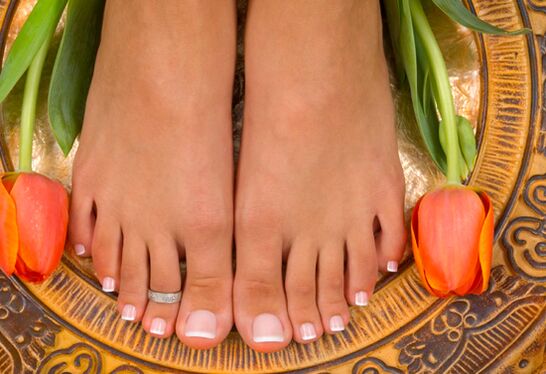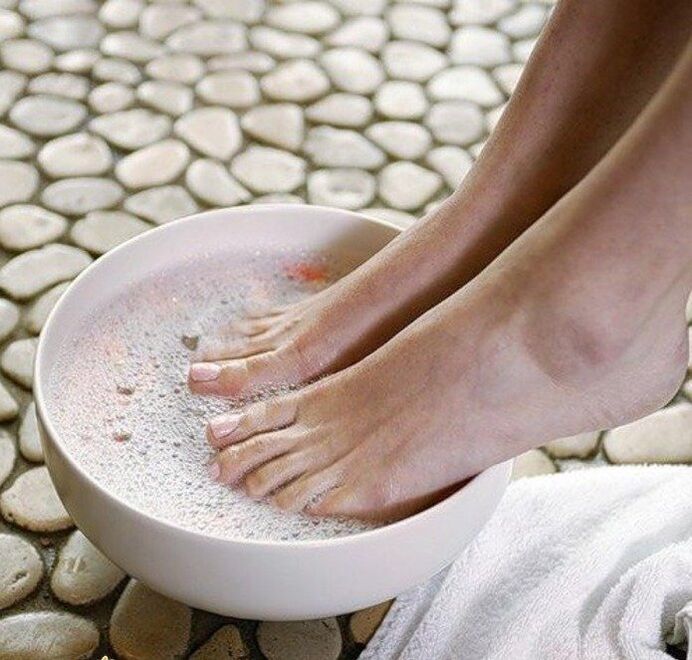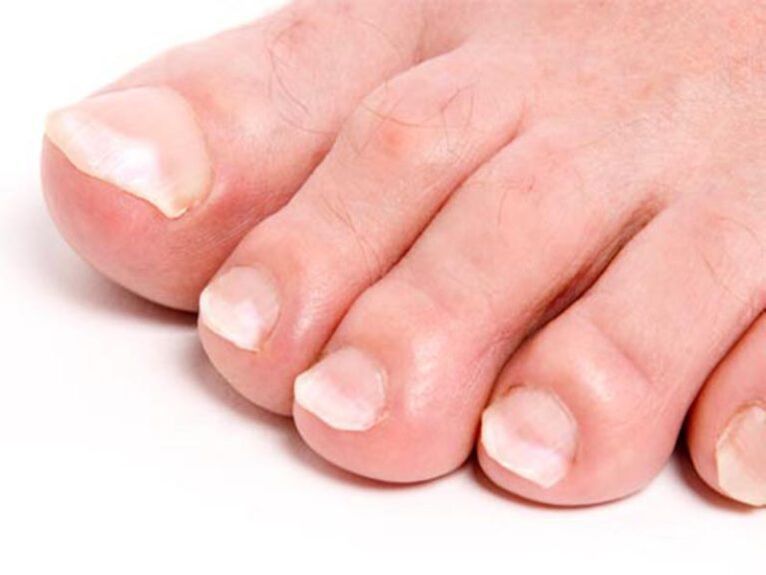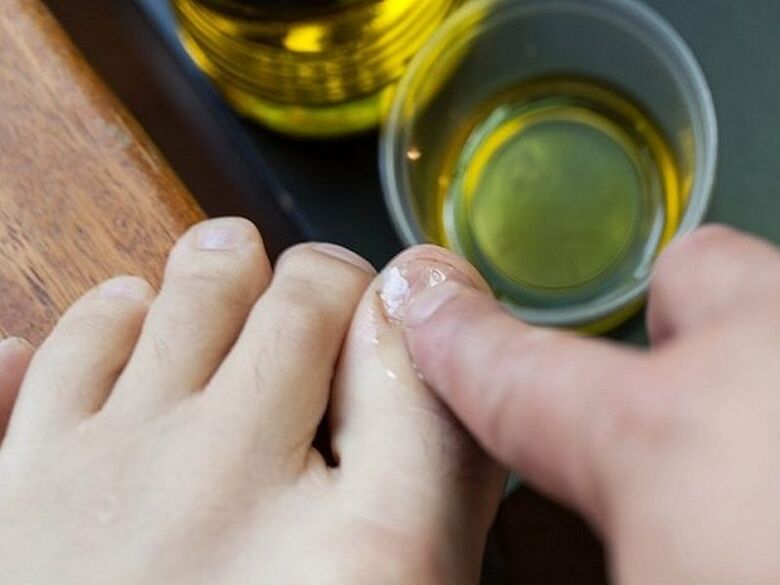
Nail fungus is an extremely unpleasant phenomenon. You can catch the disease, especially in summer, anywhere. But the fight against it often takes a long time. A quarter of the world's population, as the statistician says, suffers from this disaster. We will show you how to treat toenail fungus at home.
Vinegar for nail fungus
Few people know that vinegar can be used to solve the rather complex medical problem of eliminating nail fungus. Thanks to the availability of table vinegar (9% acid solution), and even the essence of vinegar (70% acid solution), which can be purchased at the hardware store or in the market, there are many ways to treat toenail fungus byuse this product.
Of course, self-medication with vinegar should be performed only if the disease has not turned into a neglected form and it is advisable to combine it with specially developed medications.
However, when there is an urgent need to treat nail fungus, and there is no money and time to visit a doctor, and there is no drug therapy, you can use vinegar yourself, the main thing is to adhere to proper safety rules.
Characteristics of vinegar use
The main effect of using vinegar is to create an acidic environment in the area of infection by the fungus, which prevents the growth of hyphae and the spread of spores.
Gradually, the fungus, left without access to new sources of nutrients, dies and the lack of much more persistent spores prevents the possibility of a recurrence of the disease.
At first glance, everything is very simple - how to destroy bacteria with an antiseptic. But in fact, the fungus turns out to be very durable, as its body is not located on the surface of the nail or skin, but goes to the thickness of the tissue.
In this regard, a positive result from the therapy of oncomycosis should be expected only in cases of strict regularity of procedures, which will not leave the parasite time for rehabilitation and penetration under the skin.
Before treating nail fungus, make sure that the concentration of acetic acid used is the same as that indicated in the recipe.
If the recipe contains a mention of vinegar essence, then this means a 70% solution, which should be dispensed or applied in drops. Food vinegar or table vinegar, respectively, contains 6 and 9% acid. Neglecting these data can lead to the fact that treatment will end with a chemical burn.
In addition to this point, there are no specific contraindications to vinegar treatment. Individual intolerance is very rare, but vinegar is such a common substance that patients are usually aware of it.
A burning sensation may occur during the first procedures, but this is normal and will pass over time. Otherwise, vinegar, subject to safety rules, poses no threat to health.
Vinegar bath

Warm foot baths are considered an effective remedy against fungi; regular use allows you to get rid of onychomycosis at an early stage without additional medications.
Also, vinegar baths are an excellent prevention of fungal infections. The procedure requires warm, about 50 degrees, water and a glass of vinegar with 9% concentration.
The water level in the pelvis should not be high, but only up to the ankles. The feet are dipped in the solution and held there for 15 minutes.
Before the vinegar bath, it is advisable to perform a thorough pedicure procedure, including removing the affected areas of the nail plate and dead layers of skin, calluses and corns on the feet, but without applying a decorative layer on the nails.
If you cut and paint the nails yourself, then you should do so very carefully, as micro-damage to the skin can contribute to the spread of fungal infection.
Immediately after the vinegar bath, wipe your feet with a towel and wear cotton socks. Repeat three times a week.
Vinegar creams
Lotions in areas affected by the fungus are best done after baths with vinegar.
For this, both pharmacy products and pure 9% vinegar are suitable, in which a cotton pad is wetted and applied to the nail for fifteen minutes.
A more complex recipe: a mixture of vodka or medical alcohol forty degrees, glycerin and 70% acetic acid in equal proportions, mix until smooth.
A cotton swab, moistened with a solution, is held for fifteen minutes in the affected areas, after which they wear socks made of cotton material. The course of treatment is one week, if necessary, you can repeat it after a few days.
Ointment against foot mold
All existing local preparations are based on the following active ingredients:
- bifonazole;
- sertokanazol;
- ketoconazole;
- terbinafine;
- naftifine;
- oxyconazole;
- cyclopiroxolamine.
The selection of oil for toenail fungus is carried out only after scratching the skin or the upper part of the nail. Based on the results of the analysis, it becomes clear which of the types of pathogenic microorganisms is the causative agent of mycosis:
- epidermophytes;
- knitwear;
- dermatophytes;
- microspores;
- mold mold;
- yeast-like mushrooms.
Based on the results of the diagnosis, you should buy the best oil that can withstand the detected fungal pathogen.
Antifungal ointment
All antifungal agents created to get rid of nail fungus are divided into 2 groups:
- Allylamine. These drugs penetrate deep into the nail plate, completely destroying the fungal colony. After a course of treatment, the concentration of the accumulated active substance helps to resist relapse for a long time, a healthy nail grows instead of the nail affected by the fungus.
- Azoli. They interfere with the synthesis of fungi by destroying its cell membrane. The effect of drug accumulation on the nail plate leads to complete death of the infection.
If the affected nail area is still relatively small, you can get rid of the fungus with a special manicure.
These funds are used as a regular pedicure spray, applied in a thin layer directly to the affected nail twice a week.
For prophylaxis, healthy nails on neighboring fingers should also be varnished, as mold spores spread very quickly and easily in space.
Preparatory procedures

These guidelines will help you use the anti-fungal ointment more effectively.
- If the fungus has infected several areas in your body, then they should be treated at the same time to avoid a recurrence of the disease.
- Apply the oil not only on the affected nail or skin, but also on the adjacent areas.
- During the period of application of the oil, observe a strict hygiene, both in the affected area of the skin, and in the whole body as a whole.
- Before applying the medicine, thoroughly clean the affected area with antibacterial soap under running water. Then take a relaxing bath. To do this, dilute 1-2 tablets of furacil or potassium permanganate in 5 liters of warm boiled water. Soak your hands or feet in the solution for 10-15 minutes.
If, after a few weeks of using the drug, the first signs of a withdrawal of the disease do not appear, it is necessary to change the oil and consult a dermatologist.
Ointment with naphtha
Antifungal cream with the active substance naftifine hydrochloride, which contributes to the breakdown of the cell wall structure of the infection. Penetrates into the deep layers of the skin. It also exists in the form of a solution.
Used in the treatment of foot fungus, nails, various lichens on the body. The agent is applied to the affected area, cleaned and in adjacent areas once a day.
The duration of the course is from a few to eight weeks with mushrooms on the skin. With a nail infection, apply several times a day for six months.
Contraindicated in hypersensitivity to naftifine. It can sometimes cause redness and burning of the skin, but you should not stop the treatment.
Terbinafine ointment
One of the safest and most effective antifungal agents. This is probably due to the active ingredient terbinafine.
The ointment is applied in a thin layer at the base of the nail and in the areas adjacent to the skin and rubbed. The procedure is repeated 1-2 times a day.
The course of therapy lasts from 14 days to 1 month. Usually, the first results are visible after the first two weeks. If no improvement is observed, then replacement of the agent with another drug is recommended. The drug is allowed for both adults and children from 2 years old.
Ointment with ketoconazole
This remedy is most effective for yeast infections, especially on the skin. Ketoconazole - the main active ingredient of the oil, penetrates into the deep layers of the skin and acts directly on the fungal cells, preventing their reproduction and causing death.
Good because it quickly relieves the symptoms of fungus. Apply once a day for a month if the lesion is localized on the hands and up to two months if it is localized on the foot.
Clotrimazole ointment
An effective antifungal remedy is a cream used to treat nail plate and skin. The main component of the drug is clotrimazole, which destroys the membranes of fungi, and this leads to their death, applied to diseased nails twice a day.
The duration of treatment depends on the degree of development of the disease. But even after the disappearance of its symptoms, treatment should be continued for a month.
Ointment is contraindicated in case of individual intolerance to its components and liver diseases.
Inexpensive ointments: salicylic, zinc and sulfuric
Salicylic ointment can be used to successfully treat nail fungus. Used in two ways. In the first case, it is applied to the affected areas with a thin layer.
In the second case, using the ointment, compresses are made at night. After such procedures, the skin on the feet will begin to peel tightly. Soap and soda baths will help speed up the disposal process.
Sulfur ointment is an old proven remedy against nail fungus. Applied once a day at night for a week, the concentration is prescribed by the doctor individually.
It is a potent allergen, so before use it is necessary to test on a healthy area of skin.
Tea tree oil against mold

Tea tree oil is an effective remedy against onychomycosis, acting directly on the cause of the disease - dermatophyte fungus.
Tea tree essential oil contains alpha-terpine, alpha-fellandren, lemon, sabine, cineole and other substances that offer its antiseptic and anti-inflammatory properties.
Before using the essential oil, it is necessary to do an allergy test - apply a little product on the skin of the wrist, if irritation, redness and other reactions do not occur within 12 hours, then the product can be used for medical purposes. .
Otherwise, it must be diluted to a safe concentration, or this technique must be abandoned altogether.
Ways to use tea tree oil:
- Foot bath with tea tree oil. In a basin pour warm water up to the level of the joints, add 15-20 drops of essential oil and keep the feet in it for twenty minutes, maintaining the high water temperature (45-50 degrees). The course of treatment is two months, you need to take baths every day. During the treatment procedure, it is necessary to remove the affected areas of the nail plate using a file, nail tongs or scissors.
- Apply the oil to the nail plate. If you do not have a reaction to undiluted tea tree oil, then to increase the effectiveness of the effect, it is applied in its pure form to the affected areas of the nail. Previously, the feet were steamed in warm water with the addition of laundry soap (for better digestion, it can be ground). The oil is rubbed into the nail plate with a cotton swab twice a day, there is no need to wash the product.
How to quickly cure nail fungus
Internal and external use of hydrogen peroxide for the treatment of infectious diseases and other ailments was described by Professor Neumyvakin in a book written on the basis of personal experience.
He mentions hydrogen peroxide as a prophylactic agent with antibacterial properties.
External use of hydrogen peroxide for the treatment of fungal infection is carried out after evaporation of the feet in warm water with soda dissolved in the amount of one teaspoon per liter.
When the nail plates become soft, grab a small fragment of the affected nail area using nail clippers and, soaking it with a 3% peroxide solution, apply to the nail plate.
Let it act for 10-15 minutes on fingernails or from 40 minutes to an hour on foot. Perform the procedure twice a day until the symptoms of the fungal infection disappear.
To reduce the evaporation of peroxide and increase the intensity of the impact, the nail plate with a lotion is wrapped with plastic wrap.
Once the exposure time has elapsed, rinse your toes and hands thoroughly under running water.
For therapeutic and prophylactic purposes, it is recommended to insert the nail cavity with hydrogen peroxide three times a day.
Good results are given by hand and foot baths (depending on the localization of onychomycosis) with hydrogen peroxide.
Dilute 3% hydrogen peroxide in water at a temperature of 40-50 degrees at the rate of two tablespoons per liter of water. The procedure time is fifteen minutes, the regularity of the procedure is twice a day for a week.
Other folk remedies
Comprehensive treatment of toenail fungus using popular recipes based on hydrogen peroxide allows you to destroy the fungus and get rid of the unpleasant smell and other accompanying symptoms forever.
Two effective folk remedies for fungal infections:
- Recipes with peroxide 1. To prepare the mixture, you will need melted soda (0, 5 cups), hot water (4 cups), 3% hydrogen peroxide (0, 25 cups) and half a cup of magnesium sulfate or saltsEpsom. Mix all the ingredients thoroughly and add a quarter cup of vinegar. Wet a cotton swab with the resulting solution and fix it to the nail plate affected by the fungus with a plaster. The bandage should be renewed every ten hours, the course of treatment is one month.
- Peroxide recipe 2. The procedure for treating mushrooms according to this recipe consists of three stages. First, it is necessary to prepare a solution for the treatment of nail surfaces and skin affected by the fungus - mix 3% vinegar and peroxide in a concentration of 3% in a ratio of 1: 1. This mixture is applied to the feet while boiling. The second stage is dipping the fingers with a fungal infection of the nails for half a minute in a weak solution of bleach in water, after which they are thoroughly rinsed under running water and wiped dry with a towel. Finally, tea tree oil mixed with Vaseline in equal proportions is applied to the nail plate. Wear warm socks or gloves (if this technique has been used to treat nail cancer). The course of treatment is one week.
- Novokaine lotion. A very simple but effective folk remedy in treating fungus is novocaine lotion. Simply moisten a piece of cotton wool with novocaine and apply to the fungus overnight. Just two such creams are enough to get rid of the fungus forever.
- Tincture of apricot resin: 1 tablespoon of resin removed from the tree, pour a glass of vodka, leave for three days. Paint the skin of the feet and nails with this solution. Shake well before each use. It took us a month for medication, the affected nails were cut while peeling, they grew young, healthy. On examination, the doctor confirmed the fact of healing. I can also recommend using old thickened sunflower oil in this case.
- Garlic Applications: I took a clove of garlic, squeezed it with garlic, put the mass on the nail, covered it with cellophane and wrapped it in bandage or placed it on the tip of my finger. I left the bandage until morning, the first few days I felt a throbbing pain, like abscess, but I had to endure. The procedures were repeated daily and new nails were grown.
- Strong coffee. Few people know that regular but strong coffee is a very good folk remedy for treating fungus. Make your coffee stronger and just dip your hands or feet into the cup, depending on where you have the fungus. This procedure is best done in the evening, before bedtime. The fungus disappears completely after some such procedures in the evening. At the same time, the skin becomes smooth and the pain passes quickly.
















